
Survival of the Richest: Escape Fantasies of the Tech Billionaires
by
Douglas Rushkoff
Published 7 Sep 2022
(Companies that add trendy words like “blockchain” to their names have seen their stocks quadruple .) Following AOL’s example of mailing free disks, companies scramble to get subscribers at any cost. A company can lose money for years, as long as its user base is rising—preferably at an exponential rate. But it’s not all abstract. Hockey stick user growth leads to hockey stick stock growth. Then, with the increased capital at their disposal, tech companies build “war chests” with which to lobby for policy changes in the real world. Uber and Doordash spend millions lobbying to be allowed to hire drivers as low-cost independent contractors rather than employees entitled to benefits.
…
They felt as though they had internalized what actually mattered about technological development, and should now be in charge. From then on, receiving money from a venture fund meant “pivoting” from whatever a founder may have intended to do with technology toward doing whatever would be most likely to generate “hockey stick” growth curves and 1000x returns for investors on exiting. The Mindset had arrived. For example, Google began as a project by two Stanford University students looking for a better way to search the web than Yahoo’s top-down classification system. Their bottom-up system would look at the ways websites linked to one another, and use that to determine search rankings.
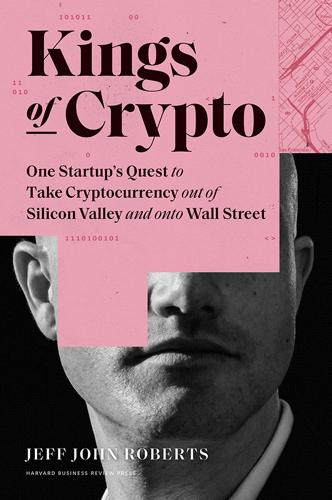
Kings of Crypto: One Startup's Quest to Take Cryptocurrency Out of Silicon Valley and Onto Wall Street
by
Jeff John Roberts
Published 15 Dec 2020
Years later, Fred would recall how he and Brian took their bromance to a new level during a trip to Oahu, where together they went over a set of thirty-six questions presented in a New York Times article as a way to accelerate intimacy. Meanwhile, the startup’s monthly numbers, ever up and to the right, began to resemble another sacred Silicon Valley invocation—the hockey stick. The phrase “hockey stick growth” implies a sudden lurch upward, and this is what Coinbase had toward the end of 2013, as the company rapidly approached a customer count of one million wallets. Fueling it all was a staggering jump in the price of bitcoin, which burst past $200 in October, then $500 in November, and over $1,000 in December.
…
See Zhao, Changpeng DAO (Decentralized Autonomous Organization), 90–93, 145–146, 169–170 dApps, 188 Davenport, Ben, 57 decentralized finance (DeFi), 217–218 Dentacoin, 138 Dewitt, Dorothy, 224 Digital Asset, 104, 105 Digital Gold (Popper), 23 Dimon, Jamie, 103, 138, 211–213 diversity, 225 Dixon, Chris, 69, 93, 124, 157, 216 Dogecoin, 54, 181–182 Dorman, Jeff, 105–106 Draper, Tim, 167 Dread Pirate Roberts, 31, 59, 122 Earn.com, 186–187 Ehrsam, Fred, 10–14 on Ethereum and smart contracts, 93–95 on the future, 220, 225–226 the hedger and, 174 Olaf hired by, 28–29 Electronic Frontier Foundation, 100 electronic market makers, 192 Elliott Wave Theory, 151 enterprise blockchain, 73 ether, 92–93 Ethereum, 84, 87–97 Binance and, 182 blockchain issues in, 202 flash crash of, 139–141 hard fork at, 91–93 market caps of, 203 popularity of, 134–139 value of, 152 Ethereum Classic, 196 Facebook, 63, 64 Project Libra, 205–207 Winklevoss twins and, 114–115 Farmer, David, 159, 175 Federal Bureau of Investigation, 59–60, 126–127 Federal Reserve, 12, 53, 212 Federal Reserve Bank of New York, 102 Fidelity, 209–210 Financial Crimes Enforcement Network, 126 Financial Times, 136–137 Finney, Hal, 23 flash crashes, 139–141 Forbes magazine, 148 Force, Carl Mark, IV, 59–60 Fortune magazine, 206 Founder’s Fund, 166–167 Freeman, Kristian, 153 Galaxy Digital, 172 Garlinghouse, Brad, 224 GDAX (Global Digital Asset Exchange), 96–97, 101–103 flash crash in, 139–141 professional traders and, 113–117 Gemini, 97, 105, 116–117 Gemini Dollar, 205 geo-fencing, 40 Gilmore, John, 100 Give Crypto, 175 Goldman Sachs, 11–12, 37, 104, 171, 212 on bitcoin, 225 Elliott Wave Theory at, 151 Google, 40, 64, 157, 195–196 Google Ventures, 204 Graham, Paul, 36 Grayscale, 54 Grayscale Bitcoin Trust, 208 Hacker News, 78 Hacking Team, 197 Hammell, Craig, 38, 64 on adding currencies, 181–182 on Hirji, 191 on infrastructure, 155–156 Hanyecz, Laszlo, 22 hard forks, 92, 147 Haun, Katie, 17–18, 20, 155, 225 as Coinbase ally, 49 cryptocurrency expertise of, 59–60 on prosecuting bitcoin, 24, 31 at Stanford, 107, 218 Hearn, Mike, 76 hedge funds, 96, 172 Heroku, 156 hijackers, 142–143 Hilton, Paris, 144–145 Hirji, Asiff, 157–158, 173–175, 209 on Binance, 183 departure of, 198–199 on Earn.com, 187 on the future of crypto, 216–217 Srinivasan and, 193–200 style and personality of, 190–193 Hirschman, Albert, 48, 185 “hockey stick growth,” 51–52 hodlers, 83–84 HoweyCoin, 168–169 IBM, 90, 216 ICOs (initial coin offerings), 135–138 Binance and, 179 HoweyCoin and, 168–170 SEC on, 145–146, 168–170 swindles around, 141–145 impulse wave pattern, 151 infrastructure, 75–84, 155–159, 209–210 insider trading, 160 Internal Revenue Service, 121–126, 173 Jobs, Steve, 7, 99, 109, 111 JPM Coin, 212 JPMorgan Chase, 103, 104, 138, 211 Karpelès, Mark, 55–58 Knight, Phil, 39 KodakCoin, 167 Kraken, 96–97, 114 Lamborghinis, 146–147, 167 Langschaedel, Julian, 39 Lawsky, Benjamin, 127 Lee, Bobby, 82 Lee, Charlie, 39–40, 54, 80–81, 88 in Beijing, 81–83 departure of from Coinbase, 117–118 on infrastructure, 156 Litecoin and, 223 on Mt.
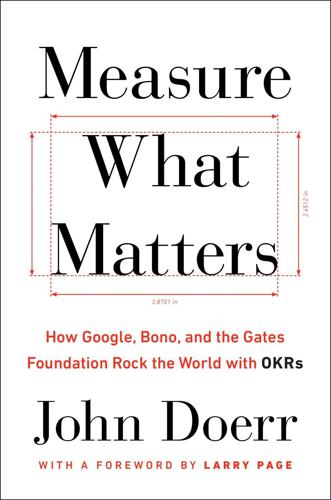
Measure What Matters: How Google, Bono, and the Gates Foundation Rock the World With OKRs
by
John Doerr
Published 23 Apr 2018
* * * — While Larry and Sergey had few preconceptions about running a business, they knew that writing goals down would make them real. * They loved the notion of laying out what mattered most to them—on one or two succinct pages—and making it public to everyone at Google. They intuitively grasped how OKRs could keep an organization on course through the gales of competition or the tumult of a hockey-stick growth curve. Along with Eric Schmidt, who two years later became Google’s CEO, Larry and Sergey would be tenacious, insistent, even confrontational in their use of OKRs. As Eric told author Steven Levy, “Google’s objective is to be the systematic innovator of scale. Innovator means new stuff. And scale means big, systematic ways of looking at things done in a way that’s reproducible.”
…
Scaling on a Shoestring By Day 70, our software was in place. Teachers could sign up on the web, form a virtual “class,” and provide a dedicated number to students and parents for text messaging. We scaled quickly, a good sign—130,000 messages within three weeks of launch. We had what every new company wanted, a hockey-stick growth chart. On Demo Day, I entered a big, buzzing room with eleven other start-ups and a hundred investors. I had two minutes to make my pitch, followed by two hours of frantic mingling. I handed out my card to at least forty people. Growth costs money. By early 2012, my brother and I were $10,000 in debt.

The Code: Silicon Valley and the Remaking of America
by
Margaret O'Mara
Published 8 Jul 2019
Despite the millions in federal investment coursing through its veins, the region’s tech cluster was allowed to grow organically, over time, largely off the political radar screen. This freedom had unanticipated consequences. From the mainframe era forward, national politicians used a remarkably light hand in regulating the data-gathering behaviors of an industry whose technologies they only vaguely understood, but whose hockey-stick growth boosted the domestic economy. When the government-built Internet finally opened up to commercial activity at the start of the 1990s, both Democratic and Republican politicians agreed that regulation should be minimal, with companies largely policing themselves when it came to things like user privacy.
…
The destructive swath that Microsoft cut through the software industry, Lotus’ Mitch Kapor concluded darkly, had turned early-1990s Silicon Valley into “the Kingdom of the Dead.”30 THE NETWORK IS THE COMPUTER As Bill Gates trained his big guns on Silicon Valley, Scott McNealy was spoiling for a fight. McNealy was one of four graduate students who had come together in 1982 to found Sun Microsystems, a company whose hockey-stick growth showed Silicon Valley how much market potential lay beyond the PC. Here was another enormous success story made possible by the Valley’s distinctive ecosystem: Scott McNealy and Vinod Khosla, Stanford MBAs; Andy Bechtolsheim, Stanford computer scientist; Bill Joy, Berkeley engineer. Added into the mix was another Berkeleyite, John Gage, who had spent the 1960s organizing antiwar marches and became Sun’s adult supervision—first as its sales head, and then as its chief scientist.
…
Like his fellow Pittsburgh native and dear friend Regis McKenna, Campbell was very close to Steve Jobs. But his feelings for the Google guys were particularly heartfelt. “This is family for me,” he told author Ken Auletta, with visible emotion. “There’s innovation daily. They think about changing the world.”11 THE AD ENGINE Despite the hockey-stick growth and feverish media coverage, Google entered its fourth year in business without having turned a measurable profit. Engineering had been prioritized over all else. The company was burning cash on those ping-pong tables and toilet seats, and new VC money wasn’t forthcoming while the dot-com crash smoldered.
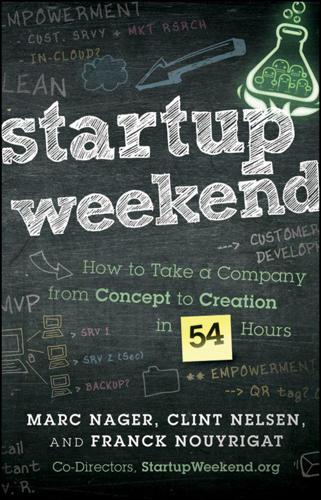
Startup Weekend: How to Take a Company From Concept to Creation in 54 Hours
by
Marc Nager
,
Clint Nelsen
and
Franck Nouyrigat
Published 8 Nov 2011
Instead of forming an elaborate strategy of what the entire product will look like, who the consumers will be, and how much money it's projected to make three years down the line, we recommend starting small and working with the information you can get immediately. For example: Who will want this product tomorrow? We always warn people in their Sunday presentations against predicting some ludicrous amount of revenue five years down the line. No hockey-stick growth curves allowed! There are generally no real justifications for their assumptions, and investors are not particularly interested in these projections anyway. They simply want to see the problem, the solution, and how you will ultimately find and satisfy your customers with your product. A good place to start is with your immediate circle of friends.
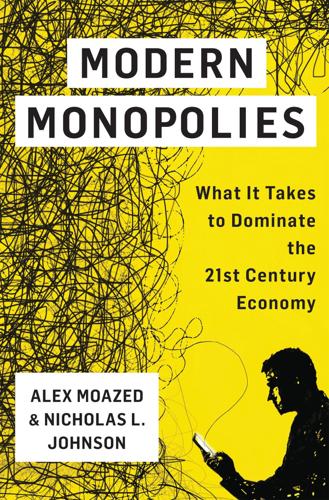
Modern Monopolies: What It Takes to Dominate the 21st Century Economy
by
Alex Moazed
and
Nicholas L. Johnson
Published 30 May 2016
As we mentioned in chapter 3, this point is called critical mass. This dynamic is why most successful platforms have a hockey stick–shape growth curve (see Figure 8.1). It’s easy to understand this shift from pre- to post-critical mass if you think of a network like a magnet. When a network is small, its magnetic force repels new users. But once the network reaches sufficient size, that magnet flips and reverses polarity. Suddenly it starts to pull in new users, and the platform’s growth takes off. Figure 8.1. Airbnb’s hockey-stick growth curve. Source: Venturebeat Platforms’ struggles with early growth are the result of what economists call a coordination problem.

Without Their Permission: How the 21st Century Will Be Made, Not Managed
by
Alexis Ohanian
Published 30 Sep 2013
Paul Graham, “Startup = Growth” Paul Graham, founder of Y Combinator, identifies the core defining characteristic of a startup as growth, which makes it fundamentally different from other types of businesses.1 No matter how successful a brand-new brick-and-mortar bakery is, it’s still not a startup because it’s limited by space and muffins and employees, which all require time and capital to grow. I love muffins, but what makes a startup special is that unlike a bakery, it can grow logarithmically (i.e., it can experience hockey-stick growth, up-and-to-the-right growth, and “Holy shit!” growth—okay, I made that last one up). That’s because of software. Write the code that solves a real problem and brings in revenue in the process, and investors want to invest in your company—even when it’s just two founders in a living room—because they know that in a year it could employ fifty people and earn millions in revenue.
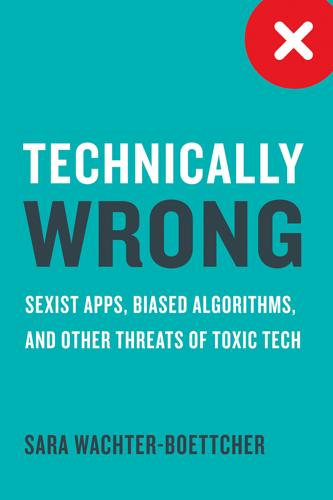
Technically Wrong: Sexist Apps, Biased Algorithms, and Other Threats of Toxic Tech
by
Sara Wachter-Boettcher
Published 9 Oct 2017
Conversely, the more we remind tech companies that real people use their products—the more we demand to be taken seriously, and push to be represented fairly within their systems—the more chance we have that they’ll see their role for what it really is: one that profoundly affects lives, livelihoods, and communities. One that comes with responsibility, not just endless “hockey-stick growth” (the term startups love to use whenever numbers suddenly shoot up exponentially) and a big payout. Today’s tech culture still expects the world to fetishize it: to treat it like an exotic, enthralling beast. Why wouldn’t it? That’s what most press has done for the past two decades. “Founders and their publicists would have you believe that this is a world of pioneers and utopians, cowboy coders and hero programmers,” proclaimed tech-industry worker by day and freelance journalist by night Anna Wiener in the Atlantic.
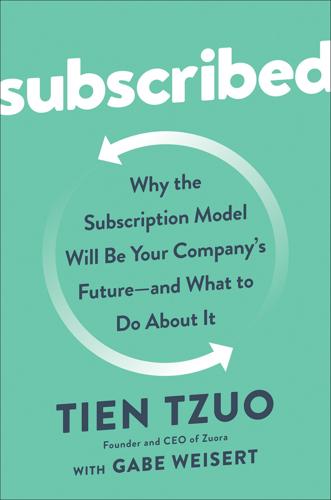
Subscribed: Why the Subscription Model Will Be Your Company's Future - and What to Do About It
by
Tien Tzuo
and
Gabe Weisert
Published 4 Jun 2018
In 2016 it revised those estimates to $1.8 billion in FY2021, revenue growing at a sustainable 10 percent–plus growth rate, 85 percent steady-state subscription mix resulting in 95 percent of their software revenue being recurring, non-GAAP operating margins in the low 30s, and free cash flow of $525 million. Wow! PTC has clearly swallowed the fish, the same way Adobe did. It’s reached the fabled inflection point where recurring revenues outgrow recurring costs, after which the unit economics favor hockey-stick growth figures. PTC’s subscription ACV (annual contract value) guidance at the beginning of fiscal year 2016 was $43 million. It delivered $114 million, almost three times that original target. PTC saw the shift toward subscriptions coming and reacted with a smart, emphatic transformation. Its management team knew full well that the subscription model creates deferred revenue, so quarterly GAAP metrics can take a short-term hit.

The Startup Way: Making Entrepreneurship a Fundamental Discipline of Every Enterprise
by
Eric Ries
Published 15 Mar 2017
But again, not because of the traction itself but because of what the traction reveals about that team’s ability to execute. In The Lean Startup, I told a story about raising money for IMVU, a company I started in 2004, and a presentation we made in which our revenue was quite small, even though we had the classic hockey-stick growth pattern. We were embarrassed, but we shouldn’t have been. The investor saw our presentation as a window into the way we thought—and the way we acted. We demonstrated fast cycle time, rigorous scientific decision making, product/design savvy, and good use of limited resources. He made a bet that if there was an opportunity in this space, we were the team to find it, and he turned out to be correct.
…
They had a breakthrough technology that could, if it worked, lead to dramatic efficiency gains in power generation and transmission. But the technology was not yet proven in the real world. The team was gearing up for a big launch at a trade show, where they planned to debut this new product and start generating the hockey-stick-shaped revenue growth curve outlined in their business plan. You can probably guess where this story is headed. Although their plan was extremely sensitive to a number of assumptions about customers and what they wanted, this team hadn’t actually spent much time with them. From my point of view, the team was flying blind and likely to experience a high-profile flop.
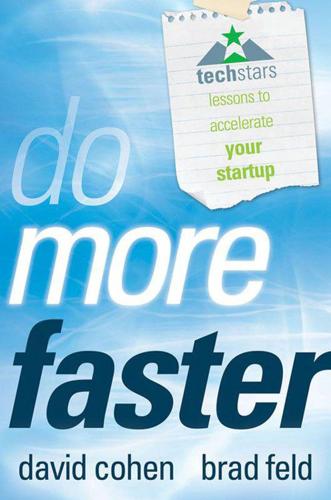
Do More Faster: TechStars Lessons to Accelerate Your Startup
by
Brad Feld
and
David Cohen
Published 18 Oct 2010
It's the fundamental challenge of a startup—what customers to choose, what problem to solve, what flow to present to the user. Several methodologies have recently emerged, such as Eric Ries's lean startups to help guide you through the critical market and product decisions that drive you toward the promised land of hockey stick growth. But these methodologies fail to directly address an absolutely crucial component of doing a startup: how to keep everyone excited about your company. In my firsthand experience with EventVue and my experience watching other TechStars companies, I've come to understand that the magic to keeping and growing momentum in your startup is knowing what to celebrate.
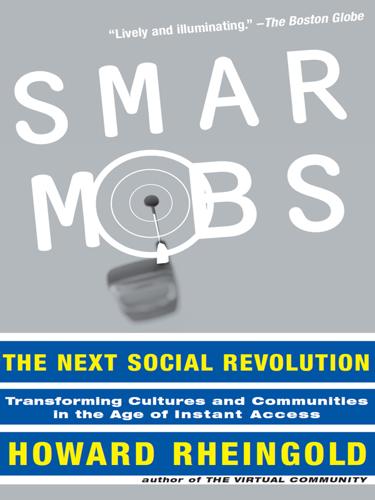
Smart Mobs: The Next Social Revolution
by
Howard Rheingold
Published 24 Dec 2011
The vectors of this research include the following: Information in places: media linked to location Smart rooms: environments that sense inhabitants and respond to them Digital cities: adding information capabilities to urban places Sentient objects: adding information and communication to physical objects Tangible bits: manipulating the virtual world by manipulating physical objects Wearable computers: sensing, computing, and communicating gear worn as clothing Information and communication technologies are starting to invade the physical world, a trend that hasn’t yet begun to climb the hockey stick growth curve. Shards of sentient silicon will be inside boxtops and dashboards, pens, street corners, bus stops, money, most things that are manufactured or built, within the next ten years. These technologies are “sentient” not because embedded chips can reason but because they can sense, receive, store, and transmit information.
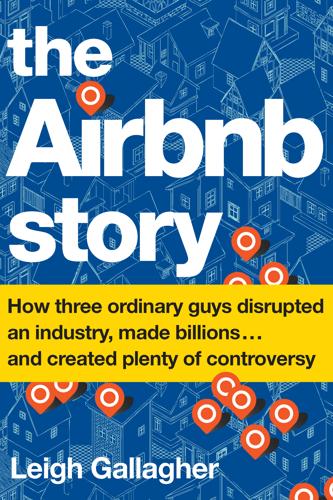
The Airbnb Story: How Three Ordinary Guys Disrupted an Industry, Made Billions...and Created Plenty of Controversy
by
Leigh Gallagher
Published 14 Feb 2017
Rather, it is the lack of traditional management experience of the company’s founding team—especially its CEO—and the speed with which they have had to learn how to become leaders of a very large company. Airbnb is now in its ninth year of so-called hypergrowth, that vertical phase in the middle of the stick part of the hockey-stick growth chart when revenues essentially double, or come close to it, every year. Such a burst typically lasts a year, two, maybe three. Airbnb basically entered this phase in 2009 and hasn’t gotten out yet. But that vertical ascendance can be dizzying for all involved, especially for its top leaders—and especially when they’ve never done it before.
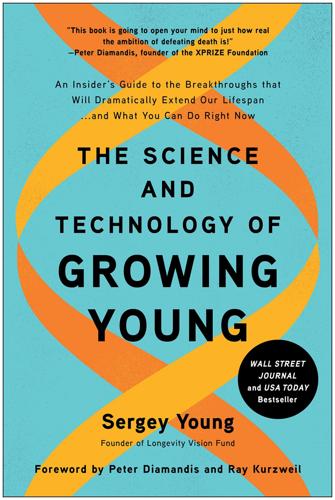
The Science and Technology of Growing Young: An Insider's Guide to the Breakthroughs That Will Dramatically Extend Our Lifespan . . . And What You Can Do Right Now
by
Sergey Young
Published 23 Aug 2021
Developments in the understanding and manipulation of our genes and cells, in the advancement of small-scale health diagnostics, and in the leveraging of data for everything from drug discovery to precision treatment of disease are radically changing how we think about health care and aging. When I speak of the Longevity Revolution, what I really mean is the cumulative effect of multiple breakthroughs currently underway across several fields of science and technology. Together, these parallel developments are forming the beginning of a hockey-stick growth curve that will deliver world-changing outcomes. Let’s take a look at a few of them. THE GENETIC ENGINEERING BREAKTHROUGH Completed in 2003, the Human Genome Project successfully sequenced the entire human genome—all three billion nucleotide base pairs representing some twenty-five thousand individual genes.

The Launch Pad: Inside Y Combinator, Silicon Valley's Most Exclusive School for Startups
by
Randall Stross
Published 4 Sep 2013
“In general, the first fifteen seconds of your presentation are the worst time for a gimmick. Because the first fifteen seconds of your presentation are when investors decide to pay attention or not. If I were you, the first things I want to say in the first fifteen seconds of my presentation are: we built a great lyrics site and we have incredible hockey stick growth.” Mahbod Moghadam says, “The hard part is, when we say that, what we’ve noticed before is, as soon as they hear ‘lyrics site,’ they’re done. So we don’t even want to call it a lyrics site. What I think it really is, is a musical Facebook. What MySpace was supposed to be and then it got ruined.”

An Ugly Truth: Inside Facebook's Battle for Domination
by
Sheera Frenkel
and
Cecilia Kang
Published 12 Jul 2021
Most of them had had little to do with the controversies over election disinformation and Cambridge Analytica, and several of them were struggling with their private frustrations with Zuckerberg and Sandberg. Held two or three times a year, M-Team gatherings were times of bonding. Zuckerberg would kick things off with a boozy dinner catered by one of his favorite Palo Alto restaurants. At the daytime sessions, executives gave exuberant presentations, with charts showing hockey stick growth in revenue and users. They showcased audacious plans for products in artificial intelligence, virtual and augmented reality, and blockchain currency. The group hashed out the biggest problems facing Facebook and discussed ways to beat back competition. The forty or so executives had gotten to know one another well over the years, working through Facebook’s painful transition to mobile, its rocky IPO, and its race for the first billion and then the second billion users.

Hype: How Scammers, Grifters, and Con Artists Are Taking Over the Internet―and Why We're Following
by
Gabrielle Bluestone
Published 5 Apr 2021
That fall, after she returned to school vowing never to speak to McFarland again, Spling was accepted into the venture capital accelerator Dreamit in Philadelphia, which gave him an additional $25,000 to build his company.38 After months of work by dozens of unpaid interns, there still wasn’t much to Spling beyond a few thousand dubious registered accounts. But between Spling’s hockey-stick growth charts, the connections provided by Billy’s wealthy friends serving on the executive board, and the legitimacy bestowed on the start-up by the accelerator, McFarland was somehow able to secure a whopping $400,000 in Series A funding from Deep Fork Capital39 and a number of angel investors including John Ason, Gianni Martire, as well as a second investment from Blumenfeld.40 Though McFarland referred to these investors as the “adult supervision” of the company in his presentation, it was clear no one really cared much what he was doing.

From Airline Reservations to Sonic the Hedgehog: A History of the Software Industry
by
Martin Campbell-Kelly
Published 15 Jan 2003
INPUT has a rigorous, proprietary methodology— which I have seen but cannot disclose—based on questionnaires and interviews with end users and subsequent reconciliation with vendors.18 Table 1.1 covers only the US market, because INPUT did not begin to capture worldwide data until much later. However, the value of table 1.1 is the trend. The time series gives a real insight into the growth of the industry. This is demonstrated visually in figure 1.2, which shows the classic “hockey stick” growth of the industry—growth that has not yet begun to flatten. Figure 1.3 reveals some interesting subplots. It shows that software products became the dominant mode of US of software consumption around 1980, and that the growth of programming services then began to slow, relatively. Figure 1.3 also shows that software products did not really take off until the early 1980s, long after IBM liberated the industry by unbundling.

European Founders at Work
by
Pedro Gairifo Santos
Published 7 Nov 2011
You just go to a web page and it’s there. That’s kind of what we’re working up. Santos: And what was the growth rate? Was it still very rapid as before or was it showing signs of slowing down? Dodsworth: No, it wasn’t slowing down, that was the interesting thing. It was really as you categorize hockey-stick growth very early on, and then it went to a very steady upward tick. But it never deviated from that either. It sat at that growth rate for the couple of years it was out there doing its thing. So it’s very solid. I think that, anecdotally, what I used to see happening quite a lot was how as people got on board Twitter they started to play with it and some of them over time would require a bit more of a power tool, and they would start to look around [and say], “[What] else can I do with Twitter?”

Women Talk Money: Breaking the Taboo
by
Rebecca Walker
Published 15 Mar 2022
Instead, I had developed a full-fledged case of spiritual materialism. I can only imagine that you can’t get further from enlightenment than entrepreneurship. Yet I was chasing spiritual conquests as blindly and desperately as I had chased revenue in my start-up. I was attempting to create hockey-stick growth out of my spiritual development. By the time I discovered this, I had already spent more than a year living in the monastery. Any notion of the free-spiritedness, romance, and excitement I had sensed coming into the experience had faded away, and I felt defeated, with no path out other than withdrawing to the depths of my suffering in order to burn through all my negative karma and hopefully, someday, millions of lifetimes from now, awaken.
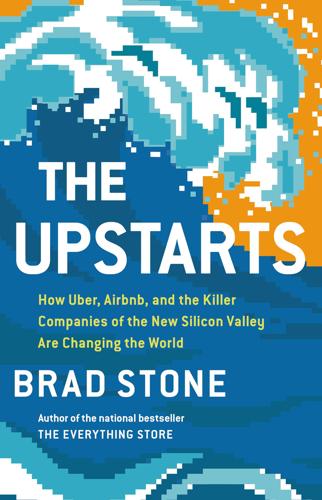
The Upstarts: How Uber, Airbnb, and the Killer Companies of the New Silicon Valley Are Changing the World
by
Brad Stone
Published 30 Jan 2017
Jim Wilson, “Good Times in Silicon Valley, for Now,” New York Times, August 13, 2011, http://www.nytimes.com/slideshow/2011/08/13/technology/20110821-VALLEY-5.html; Geoffrey Fowler, “The Perk Bubble Is Growing as Tech Booms Again,” Wall Street Journal, July 6, 2011, http://www.wsj.com/articles/SB10001424052702303763404576419803997423690. 23. Robin Wauters, “Airbnb Buys German Clone Accoleo, Opens First European Office in Hamburg,” TechCrunch, June 1, 2011, http://techcrunch.com/2011/06/01/airbnb-buys-german-clone-accoleo-opens-first-european-office-in-hamburg/. 24. Colleen Taylor, “Airbnb Hits Hockey Stick Growth: 10 Million Nights Booked, 200K Active Properties,” TechCrunch, June 19, 2012, http://techcrunch.com/2012/06/19/airbnb-10-million-bookings-global/. Chapter 7: The Playbook 1. Erick Schonfeld, “I Just Rode in an Uber Car in New York City, and You Can Too,” TechCrunch, April 6, 2011, http://techcrunch.com/2011/04/06/i-just-rode-in-an-uber-car-in-new-york-city-and-you-can-too/. 2.

System Error: Where Big Tech Went Wrong and How We Can Reboot
by
Rob Reich
,
Mehran Sahami
and
Jeremy M. Weinstein
Published 6 Sep 2021
The marriage of technology and capital has come to define the “move fast and break things” culture of Silicon Valley. The countercultural notion of a free and uncontrolled cyberspace has given way to the new mantra of “blitzscaling,” where companies grow as quickly as possible to grab a dominant market position, demonstrate hockey-stick growth to their investors, and lock in any potential network effects before competitors can respond. The monopolistic tendencies of two-sided markets that often appear on the internet only serve to reinforce the “winner-take-all” dominance of the largest players in each market. Name the largest online auction site?

Exponential: How Accelerating Technology Is Leaving Us Behind and What to Do About It
by
Azeem Azhar
Published 6 Sep 2021
During the course of my career, I’ve watched well-informed people pooh-pooh mobile phones, the internet, social networks, online shopping and electric vehicles as niche playthings destined for eternal obscurity. Over two decades I’ve observed executives in established industries regularly, perhaps even deliberately, look at the spread of a new product or service and dismiss it. Often it was because the absolute numbers were small, in spite of signs of hockey stick growth. Like spectators at Wembley Stadium during a period of exponential rain, they didn’t leave their seats until it was too late. For example, in the early 1980s, companies started to operate the first cellular phone services. At the time, handsets were clunky, calls were filled with static, data services were non-existent and coverage was patchy.
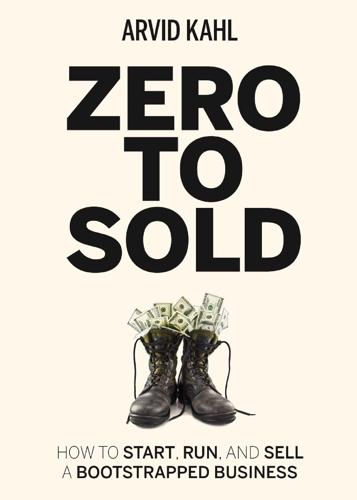
Zero to Sold: How to Start, Run, and Sell a Bootstrapped Business
by
Arvid Kahl
Published 24 Jun 2020
Crowd-investing and crowd-financing count toward this definition as well. The difference compared to traditional funding is the level of expectation regarding your growth and business goals. Indie funding sources understand that you may want to create a cash-flow-positive lifestyle business, and they are perfectly fine if you don’t exhibit hockey stick-like growth. Finally, a semi-bootstrapped business is a business that exhibits all the typical behaviors and properties of a bootstrapped company, but uses outside funding of any kind to accelerate parts of the business without subjecting itself to paradigm-shifting expectations of its growth trajectory.
…
After all, bootstrapping is the mindset of using heavily constrained resources to their maximum potential. That doesn't change if you get funding. Adding outside capital makes your business a semi-bootstrapped business, provided you retain control and ownership in the majority of the business, and your goals don't change from slow, sustainable growth to hockey-stick hypergrowth. Bootstrapping is about measured growth and realistic expectations. The venture-capital-centric assumption that, if you burn through enough cash, you will capture the whole market may work for aspiring unicorn businesses who can spend hundreds of millions of dollars and not generate a single cent in revenue.

Super Pumped: The Battle for Uber
by
Mike Isaac
Published 2 Sep 2019
Company-wide dinner service—a perk that most large Silicon Valley companies offered for those who worked after hours—wasn’t served until 8:15 p.m. That meant you couldn’t work an extra hour after five o’clock and strategically grab a free meal at, say, six on your way out the door. You’d have to work an extra 3.25 hours to get your meal. And there was always work to be done. Each time Uber entered a new city, the company’s “hockey-stick growth” attracted attention and competition. That meant employees would have to put in overtime to beat back their opponents, who were most often city regulators and taxi owners and operators, or if not them, then the local city councilman who served them. This dynamic—with Uber entering cities and taxi workers bitterly fighting back—would affect Kalanick.

Team Human
by
Douglas Rushkoff
Published 22 Jan 2019
This new money gets invested in banks that lend it to corporations, starting the cycle all over again. Digital businesses are just software that converts real assets into abstract forms of shareholder value. Venture capitalists remain hopeful that they will invest in the next unicorn with a “hockey stick”–shaped growth trajectory, and then get out before the thing crashes. These businesses can’t sustain themselves, because eventually the growth curve must flatten out. The myth on which the techno-enthusiasts hang their hopes is that new innovations will continue to create new markets and more growth.
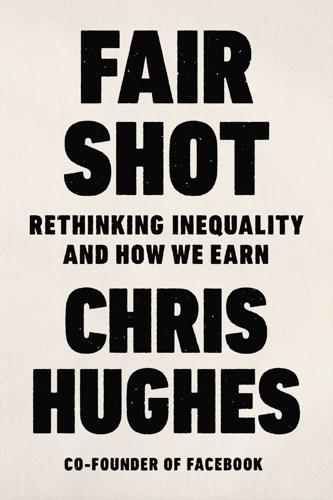
Fair Shot: Rethinking Inequality and How We Earn
by
Chris Hughes
Published 20 Feb 2018
As late as that year, Facebook had only a handful of engineers focused on its mobile products, but it immediately pivoted to capture the emerging market, yielding enormous returns. Facebook went from zero mobile advertising revenue at the time of its initial public offering in 2012 to $22 billion a year by 2016. This kind of hockey stick revenue growth is indicative of what happens when a company has already cornered a market so clearly that nearly all it has to do is flip a switch and the money comes pouring in. Facebook had already locked virtually every Internet user into its walled garden, giving them a massive edge to take advantage of the mobile market when it emerged.

Computer: A History of the Information Machine
by
Martin Campbell-Kelly
and
Nathan Ensmenger
Published 29 Jul 2013
He persuaded CERN to place web technology in the public domain, so that all could use it free of charge for all time. In the summer of 1994 he moved from CERN to the Laboratory for Computer Science at MIT, where he would head the World Wide Web Consortium (W3C), a nonprofit organization to encourage the creation of web standards through consensus. II. The Web and Its Consequences What started the hockey-stick growth of the World Wide Web was the Mosaic browser. The first web browsers mostly came from universities; they were hastily written by students, and it showed. The programs were difficult to install, buggy, and had an unfinished feel. The Mosaic browser from the National Center for Supercomputer Applications (NCSA) at the University of Illinois at Urbana-Champaign was the exception.

Coders: The Making of a New Tribe and the Remaking of the World
by
Clive Thompson
Published 26 Mar 2019
“It feels like we were just trying to do good! But this stuff seems to be backfiring.” And tech needs to start routing around the trap of scale. Glitch’s Anil Dash thinks coders with start-up ideas should consider avoiding venture capital—or take as little of it as they can. That’s because investors will insist on hockey-stick growth, and that pushes the firm down the slippery slope to terrible design. It deforms nearly every young techie Dash meets. “We have to grow!” they’ll tell him, panicked. Why do you have to grow? “Well, because we have to meet these goals.” Why do you have to meet these goals? “Well, the limited partners that put the money into our venture expect a return on a six-year cycle, and we’re five years in, and there’s no way we’re going to make it unless we grow like crazy.”

Blood in the Machine: The Origins of the Rebellion Against Big Tech
by
Brian Merchant
Published 25 Sep 2023
(Consider the US Congress in the twenty-first century, when it is unusual for a member not to be a millionaire. And consider their stance toward the tech sector since its boom in the 1990s. “National politicians used a remarkably light hand in regulating the data-gathering behaviors of an industry whose technologies they only vaguely understood, but whose hockey-stick growth boosted the domestic economy,” historian Margaret O’Mara wrote. “When the government-built Internet finally opened up to commercial activity at the start of the 1990s, both Democratic and Republican politicians agreed that regulation should be minimal.”) “The British aristocracy and gentry were very little affected by industrialization, except for the better,” Hobsbawm explained.

Damsel in Distressed: My Life in the Golden Age of Hedge Funds
by
Dominique Mielle
Published 6 Sep 2021
Multitudes of start-ups sprang up following the 1996 deregulation of the telecom industry. They undertook massive capital expenditures to develop and upgrade data and wireless networks using some version of the mantra “build it and they will come.” Too few customers came, they came too late, and the proverbial hockey stick-projected growth in cash flow (let alone profit) failed to materialize. Companies began to fall on hard times when investors who had wholeheartedly financed the expansion until then suffered losses in the dot-com crisis, and became reluctant to extend further capital. Thus started the demise of the cash-hungry telecom companies, leveraged to the hilt and dependent on investors’ appetite for their equity and debt to continue funding their business model.

Makers
by
Chris Anderson
Published 1 Oct 2012
, but try to reinvest as much of the profits as possible into building new factory lines. Because we’re online, we’re global from the start and tend to grow more quickly than traditional manufacturing companies because of the network effects of online word of mouth. But because we’re making hardware, which costs money and takes time to make, we don’t show the hockey-stick exponential growth curve of the hottest Web companies. So, as a business, we’re a hybrid: the simple business model and cash-flow advantages of traditional manufacturing, with the marketing and reach advantages of a Web company. We’re still a small business, but the difference between our kind of small business and the dry cleaners and corner shops that make up the majority of micro-enterprise in the country is that we’re Web-centric and global.

Cogs and Monsters: What Economics Is, and What It Should Be
by
Diane Coyle
Published 11 Oct 2021
Economic historians have constructed a millennium’s worth of GDP statistics showing living standards creeping up slowly for many centuries, a little faster during the Renaissance, and then a lift-off at the end of the eighteenth century with exponential progress since then. The chart has come to be known as ‘the hockey stick’ of growth. Statistics on life expectancy, infant mortality, and health indicators paint a consistent picture of progress (albeit linear given the constraints of biology as opposed to a statistical construct that can in theory increase without limit). However, the fact that economic progress is fundamentally a matter of innovation means the statistics can probably never tell the full story.
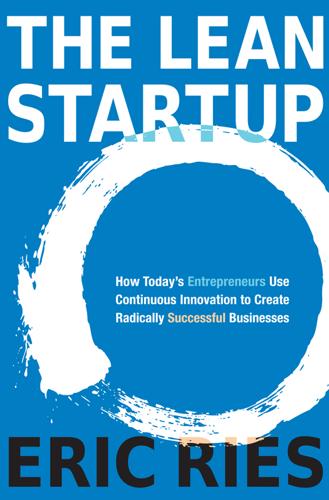
The Lean Startup: How Today’s Entrepreneurs Use Continuous Innovation to Create Radically Successful Businesses
by
Eric Ries
Published 13 Sep 2011
WHY FIRST PRODUCTS AREN’T MEANT TO BE PERFECT At IMVU, when we were raising money from venture investors, we were embarrassed. First of all, our product was still buggy and low-quality. Second, although we were proud of our business results, they weren’t exactly earth-shattering. The good news was that we were on a hockey-stick-shaped growth curve. The bad news was that the hockey stick went up to only about $8,000 per month of revenue. These numbers were so low that we’d often have investors ask us, “What are the units on these charts? Are those numbers in thousands?” We’d have to reply, “No, sir, those are in ones.” However, those early results were extremely significant in predicting IMVU’s future path.
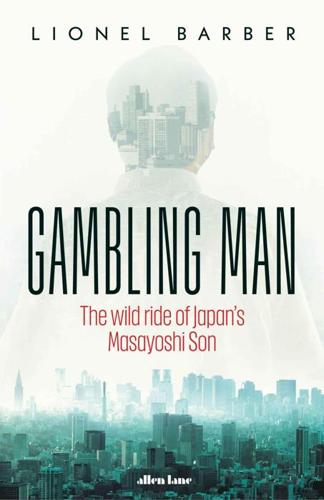
Gambling Man
by
Lionel Barber
Published 3 Oct 2024
Overall, WeWork planned to have one billion square feet of office space, twice the size of the Manhattan real-estate market.15 For this, he demanded a $70bn investment – a sum which on its own would devour more than two-thirds of the Vision Fund. Instead of showing Neumann the door, Masa rolled out the red carpet. Later, sitting alongside him in WeWork’s offices in New York, Masa pulled up on his iPad a chart that showed a hockey-stick-like growth curve for WeWork’s main business. By 2028, he wrote, the business would have 100 million members and hit $500 billion in revenue. Then Masa magicked up a valuation, incorporating every conceivable source of extra revenue for associated services. In yellow ink, he scribbled ‘$10 T’, and underlined it twice.

Platform Scale: How an Emerging Business Model Helps Startups Build Large Empires With Minimum Investment
by
Sangeet Paul Choudary
Published 14 Sep 2015
As we note in Section 2, successful platform businesses require robust architecture, and the platform stack is our first step on the road to designing platforms. 1.5 THE INNER WORKINGS OF PLATFORM SCALE The Five Ingredients Of Platform Scale The platforms of the last decade and more have repeatedly sported growth trajectories that are colloquially referred to as “hockey-stick curves.” These growth trajectories sport a short gentle start and an inflection point, followed by a steep, non-linear slope. Their resemblance to the shape of an ice hockey stick gave them the name. Venture investors see these graphs often as startups pitch for the funding needed to get past the inflection point.

Hacking Politics: How Geeks, Progressives, the Tea Party, Gamers, Anarchists and Suits Teamed Up to Defeat SOPA and Save the Internet
by
David Moon
,
Patrick Ruffini
,
David Segal
,
Aaron Swartz
,
Lawrence Lessig
,
Cory Doctorow
,
Zoe Lofgren
,
Jamie Laurie
,
Ron Paul
,
Mike Masnick
,
Kim Dotcom
,
Tiffiniy Cheng
,
Alexis Ohanian
,
Nicole Powers
and
Josh Levy
Published 30 Apr 2013
On December 15, Slurp140, a Twitter analytics service, reported that there were eighty-four thousand seven hundred seventy-one SOPA-related tweets—a record for the fight up to that point—and with the exception of the online blowup against GoDaddy a week later, the most activity we would see until the days prior to the blackout. At Don’t Censor the Net, our numbers were following a hockey stick-like growth trajectory. The day before the markup, we had launched a petition with Senator Rand Paul to rally conservatives and libertarians against SOPA and PIPA. Throughout the campaign, we were seeing several signups per minute, and we nearly doubled our existing base of support in a week. The conversion rate on our petition far exceeded what was normal for candidates and causes, and we saw a doubling of signatures thanks to those who shared the petition to Facebook or Twitter.

Lean Analytics: Use Data to Build a Better Startup Faster
by
Alistair Croll
and
Benjamin Yoskovitz
Published 1 Mar 2013
This validated the founders’ first hypothesis. And it turned out that hosts were wildly enthusiastic about receiving an offer from Airbnb to take those photographs for them. In mid-to-late 2011, Airbnb had 20 photographers in the field taking pictures for hosts—roughly the same time period where we see the proverbial “hockey stick” of growth in terms of nights booked, shown in Figure 1-1. Figure 1-1. It’s amazing what you can do with 20 photographers and people’s apartments Airbnb experimented further. It watermarked photos to add authenticity. It got customer service to offer professional photography as a service when renters or potential renters called in.
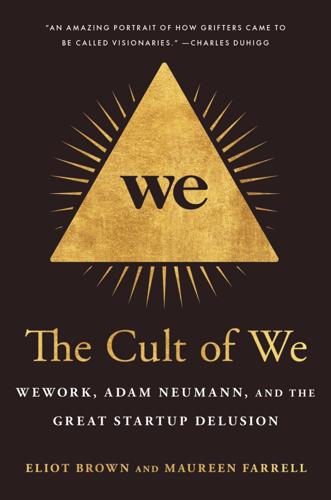
The Cult of We: WeWork, Adam Neumann, and the Great Startup Delusion
by
Eliot Brown
and
Maureen Farrell
Published 19 Jul 2021
He signed at the bottom, “Masa,” and sent it to Neumann. The duo fed off each other’s excitement, dreaming bigger and bigger. Son seemed eager, fully sold on Neumann and his chance to turn WeWork into a massive home run. In a room in WeWork’s headquarters, working alongside Neumann, Son pulled up on his iPad WeWork’s chart that showed a hockey-stick-like growth curve for WeWork’s main business. Turning on the draw function, in purple, he extended the growth curve for another five years—the hockey stick of revenue growing even higher upward—and then scribbled down some math. By 2028, he wrote, WeWork’s main business would have 100 million members and hit $500 billion in revenue.

Blitzscaling: The Lightning-Fast Path to Building Massively Valuable Companies
by
Reid Hoffman
and
Chris Yeh
Published 14 Apr 2018
Blitzscaling would have involved inefficiencies like paying construction crews to work twenty-four hours a day in order to get Disneyland open a few months earlier, or reducing ticket prices 90 percent to get to one million visitors faster—knowing that those one million visitors were networked to ten million more. Here is one of the ruthless practices that has helped make Silicon Valley so successful: Investors will look at a company that is on an upward trajectory but doesn’t display the proverbial hockey stick of exponential growth and conclude that they need to either sell the business or take on additional risk that might increase the chances of achieving exponential growth. Achieving 20 percent annual growth, which would delight Wall Street analysts covering any other industry, simply isn’t enough to transform a start-up into a multibillion-dollar company fast enough.

Masters of Scale: Surprising Truths From the World's Most Successful Entrepreneurs
by
Reid Hoffman
,
June Cohen
and
Deron Triff
Published 14 Oct 2021
And if you get x up, the exponent rises even more quickly.” Got that? No worries if not. Suffice it to say, PayPal’s “x” was such that its user base was growing up to 7 percent per day, leading to the kind of growth you get when your users and/or revenue are consistently doubling—the kind that creates a hockey stick on your growth charts. PayPal started with twenty-four users and very quickly reached one thousand; a month after that, thirteen thousand; then a month or so later, one hundred thousand; within three months of launch it had a million users. “There’s an Einstein quote that may be apocryphal,” Peter says, “but it’s to the effect that compound interest is the most powerful force in the universe.”

Binge Times: Inside Hollywood's Furious Billion-Dollar Battle to Take Down Netflix
by
Dade Hayes
and
Dawn Chmielewski
Published 18 Apr 2022
Green-lighting many of them would likely have set the company—and the media and tech industries—on a dramatically different course. Miller met with Chad Hurley, one of the cofounders of YouTube, at the bar of San Francisco’s Four Seasons Hotel at the end of 2005, the year the online video site launched. After Hurley described a hockey-stick pattern of growth for uploaded videos on the site, Miller scrambled into action, gauging the price range (roughly $550 million) and preparing an offer. In January 2006, Miller pitched the purchase to the board of Time Warner. “They told us to take a hike,” Miller remembered. “So obsessed” with making a deal happen, despite the reputation of YouTube as a repository of illegally obtained clips owned by media companies, he approached the board again a few months later.
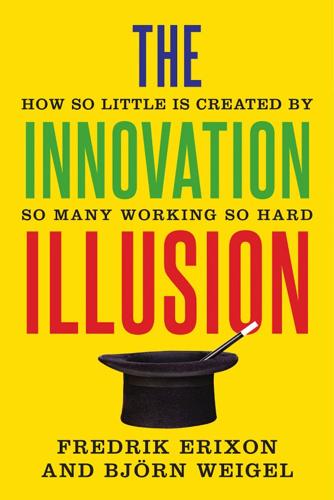
The Innovation Illusion: How So Little Is Created by So Many Working So Hard
by
Fredrik Erixon
and
Bjorn Weigel
Published 3 Oct 2016
When technologies reach markets for the first time they are seldom that good because markets are never that simple. Consequently, business planning for how new products should develop gets complicated – at best. Stanford business professor George Foster, arguing against the simplistic view of market success, contends that the “hockey-stick world,” where growth takes off with a smooth turn upwards like the shape of a hockey stick, “is a fantasy.” In the real world, start-ups go through “a lot of jarring ups and downs, more like a high-speed game of snakes and ladders.” He should know because he has analyzed 158,000 early companies, and almost two-thirds of them experienced one or more consecutive years of decline in the third to fifth year of existence.19 Behind those numbers hides an army of entrepreneurs battling with market complexity every single day.

Abolish Silicon Valley: How to Liberate Technology From Capitalism
by
Wendy Liu
Published 22 Mar 2020
Nobody wanted to invest in a company with 3% margins that would top out at a total addressable market of $10m — you might as well be selling sandwiches. Go big or go home.3 Your potential market should be worth at least a billion, and you should be well-positioned to grab a big chunk of it.4 It was crucial to show a hockey stick-shaped graph of your growth so far — revenue could come later — even if the numbers were artificially inflated. Hell, you could just make the numbers up. You wouldn’t be lying, merely presenting the facts in the most flattering light. Our pitch decks were not meant to describe reality; they created reality.

The Contrarian: Peter Thiel and Silicon Valley's Pursuit of Power
by
Max Chafkin
Published 14 Sep 2021